ECOLOGY ▪ SCIENCE ▪ EDUCATION
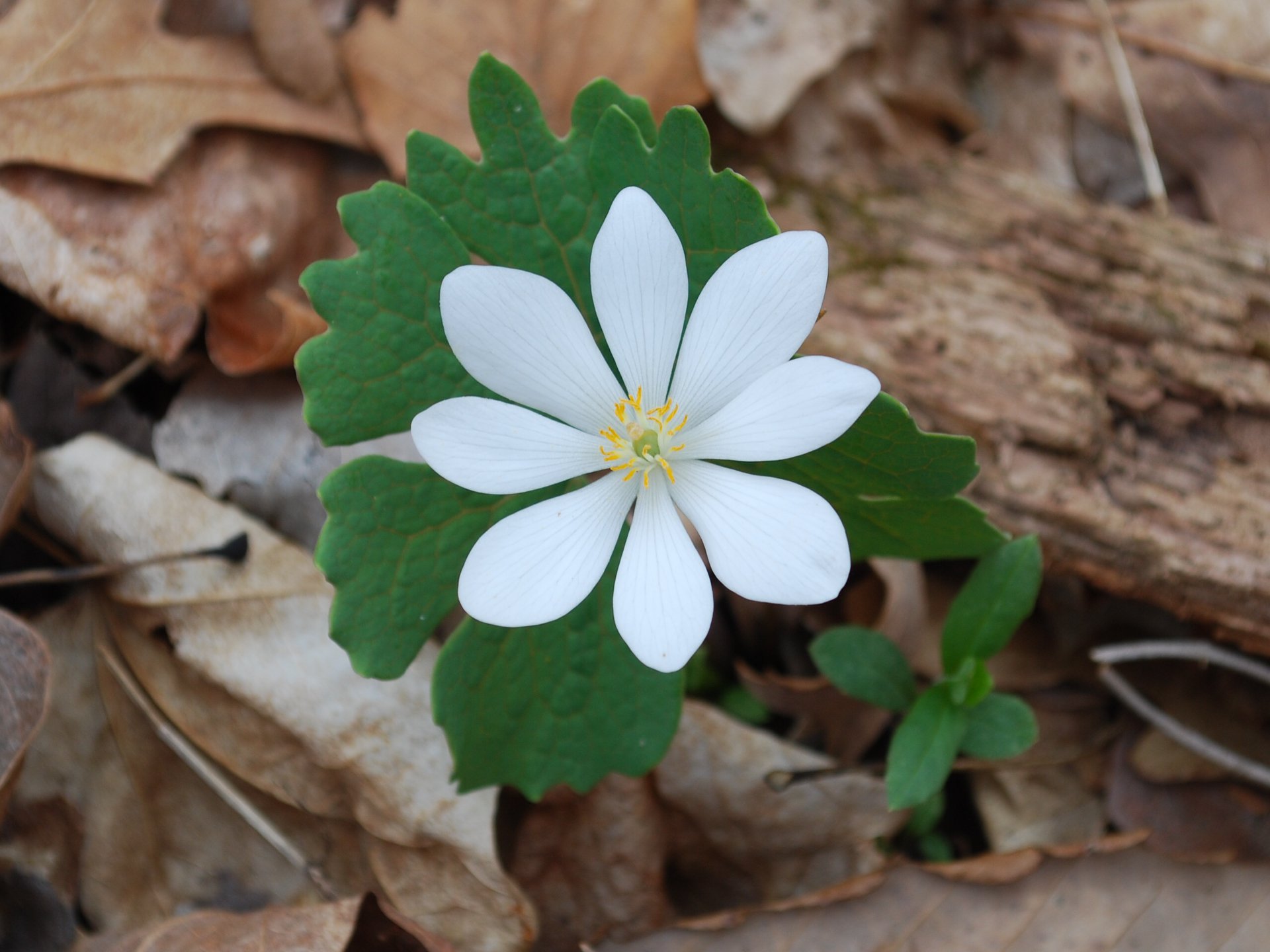
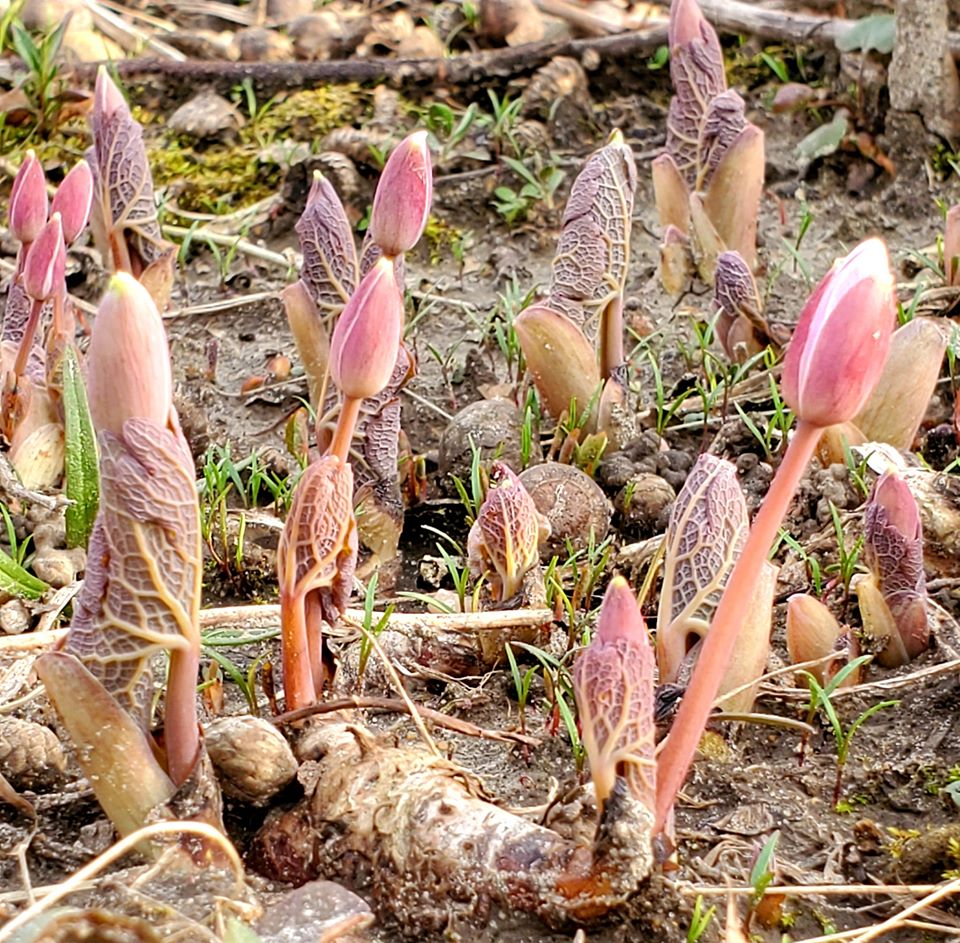


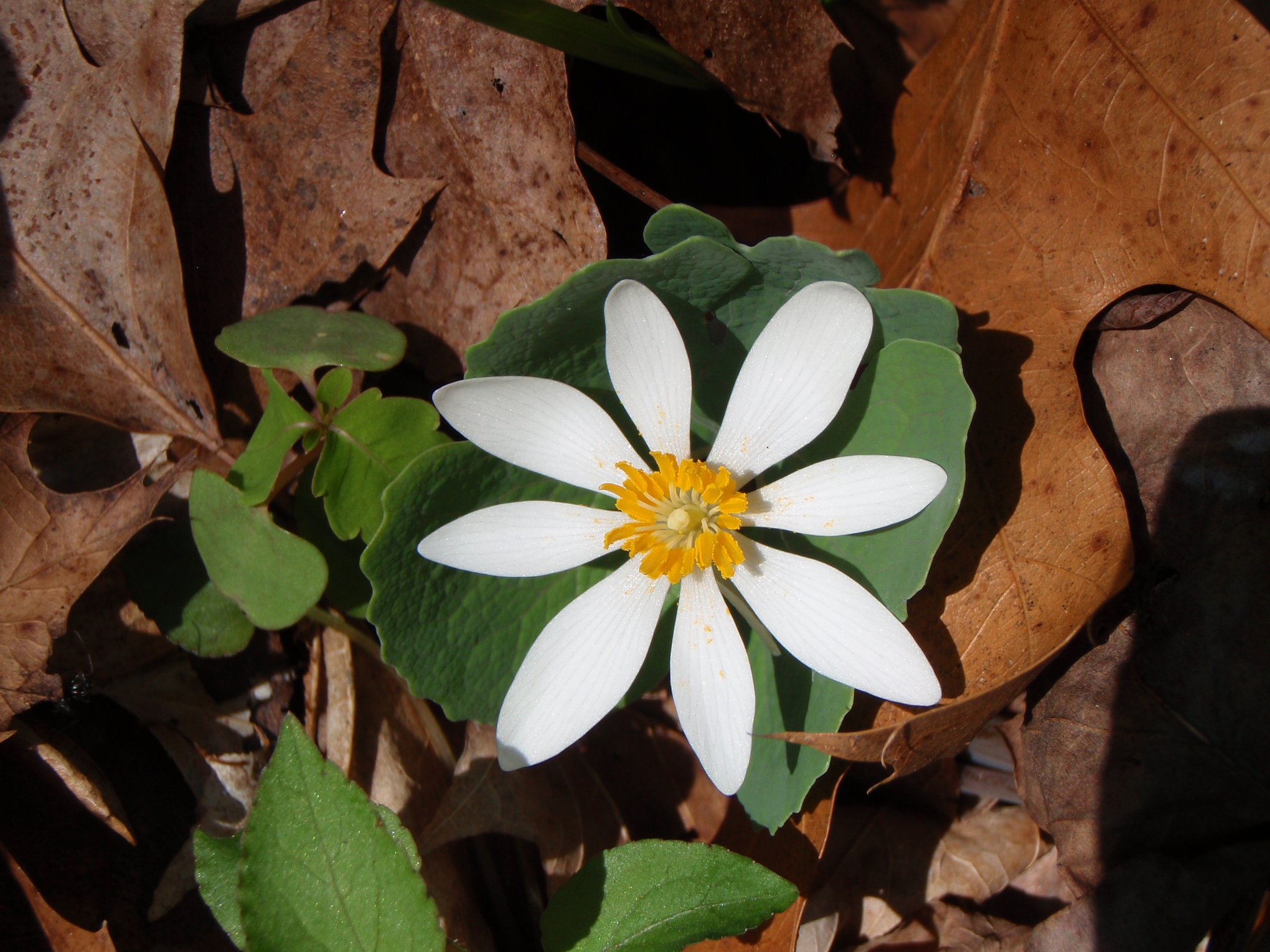
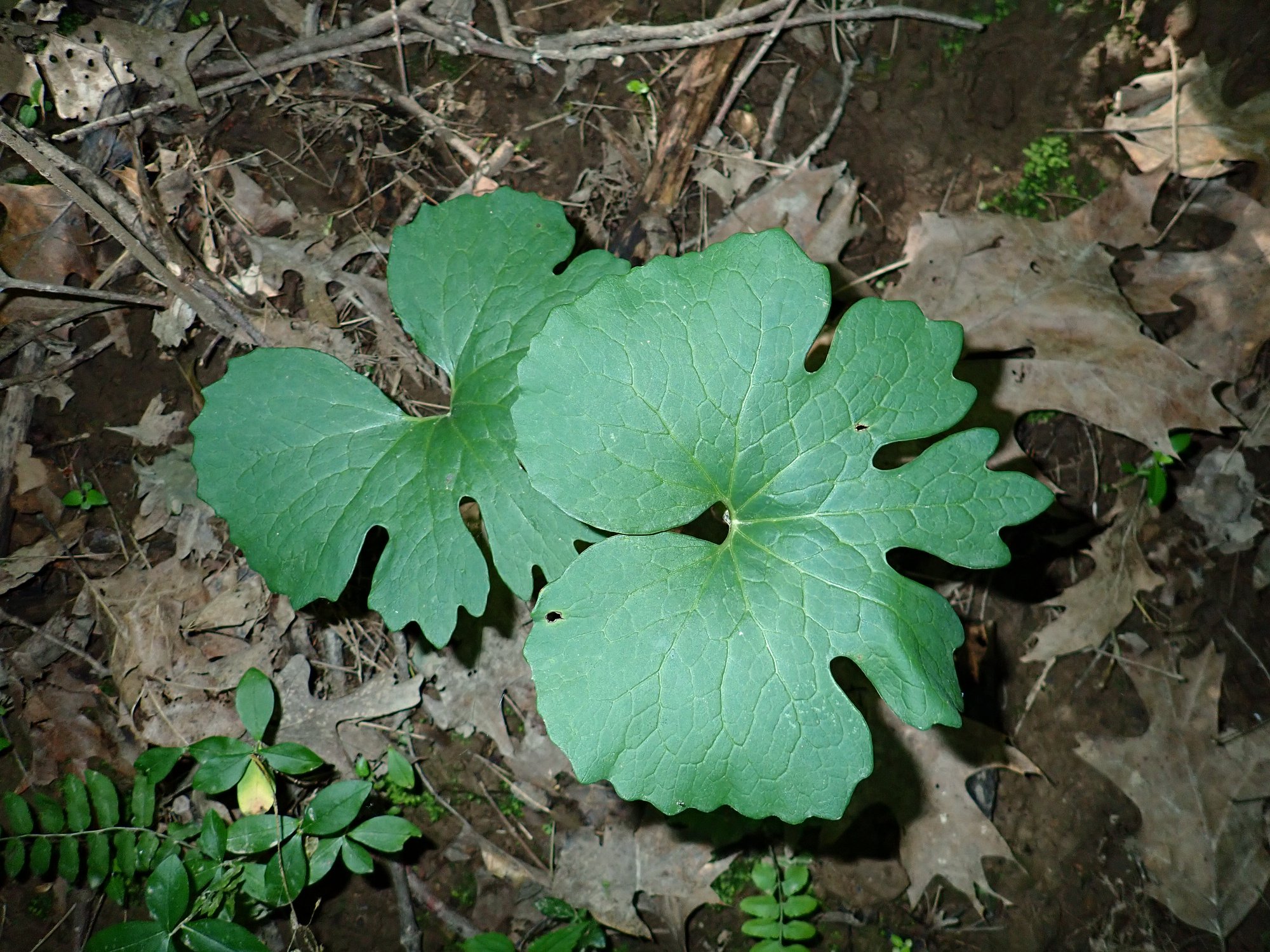
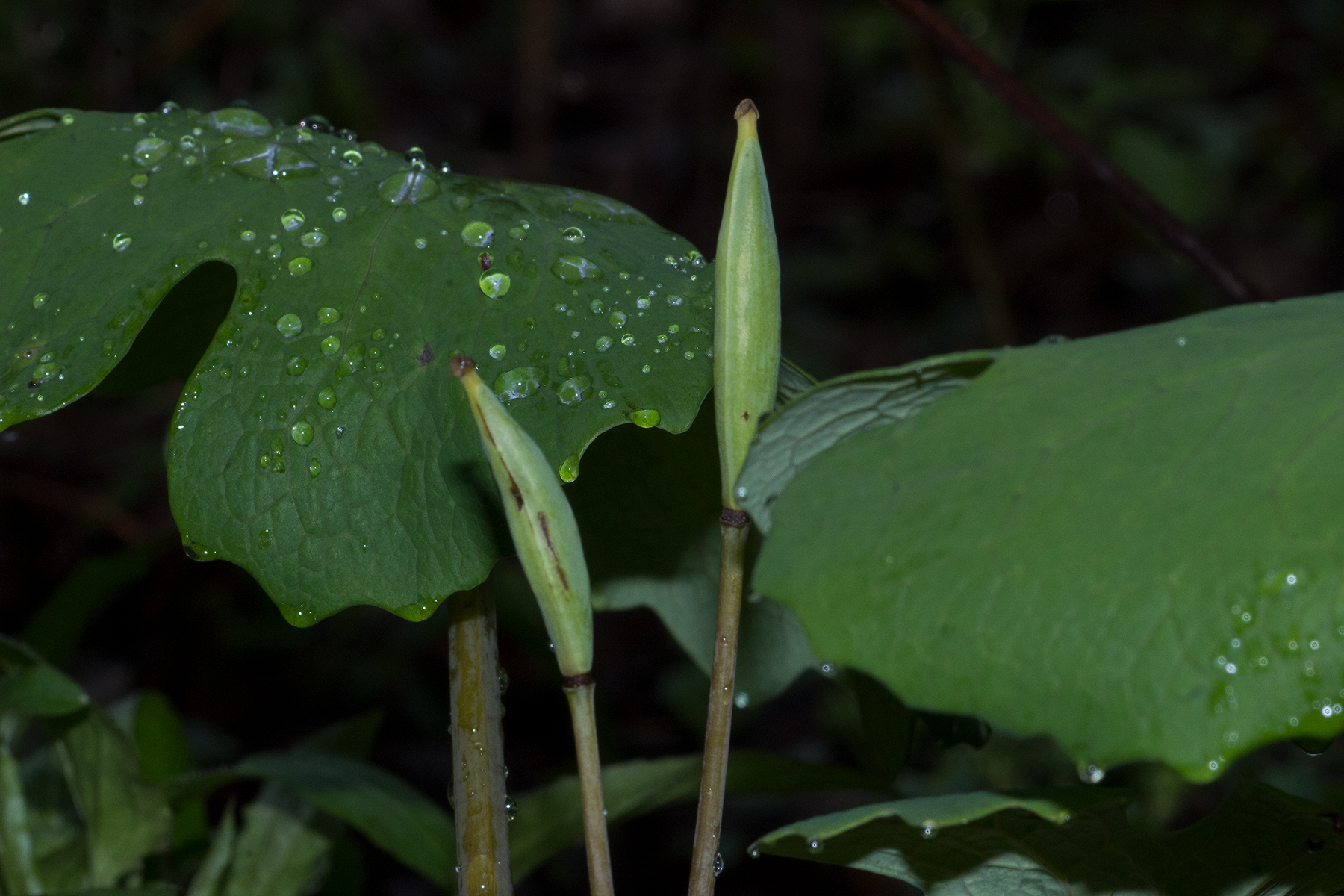
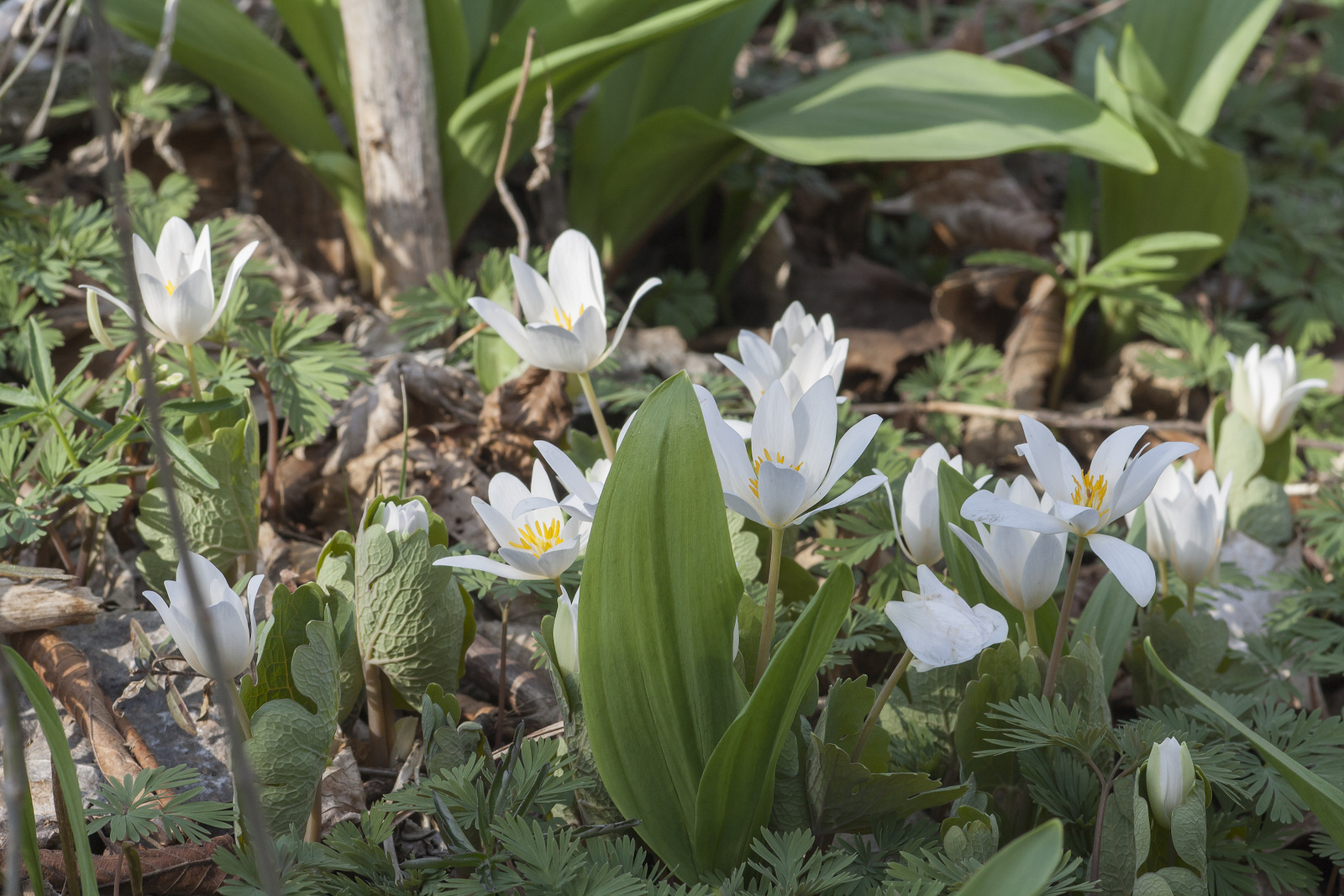
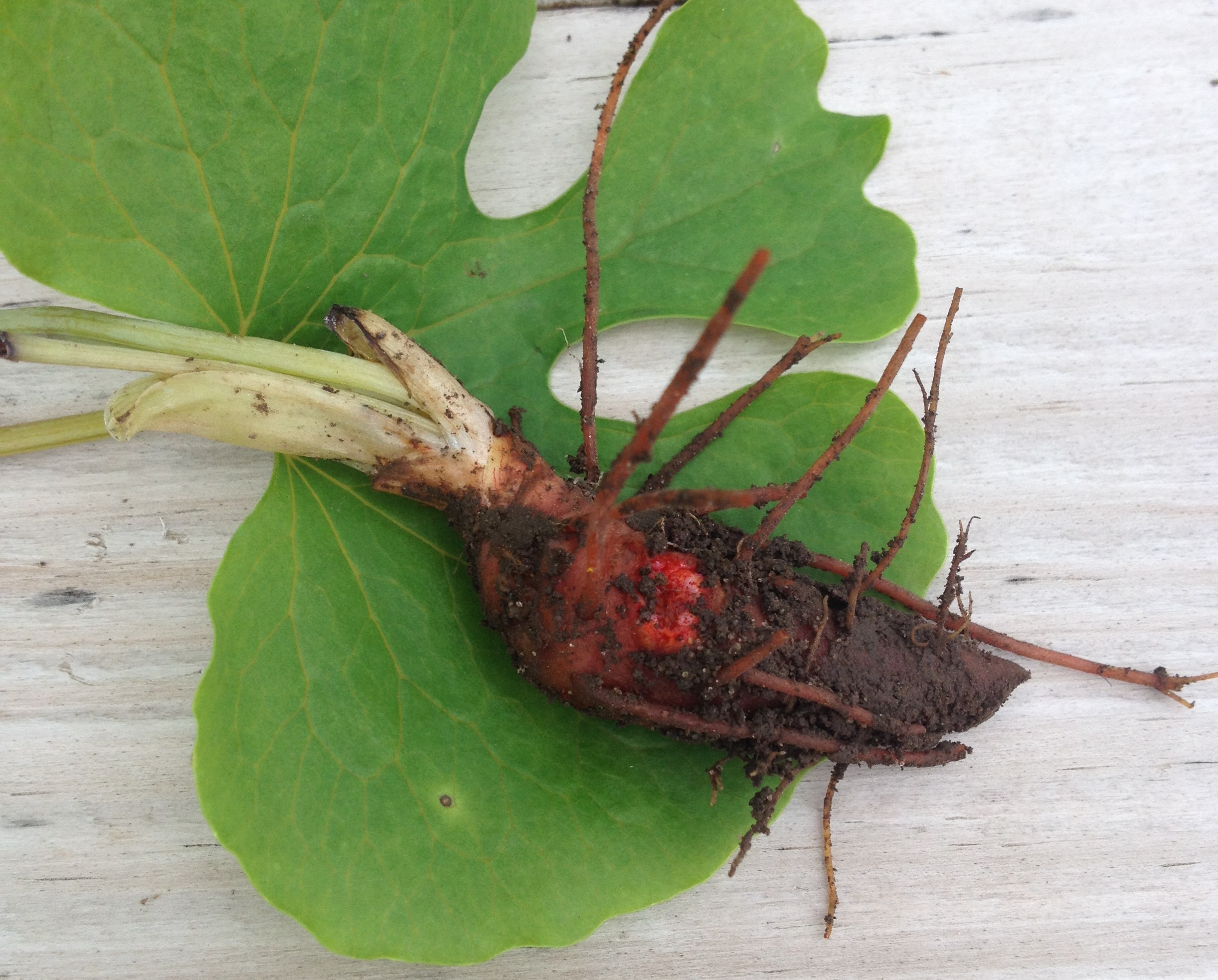
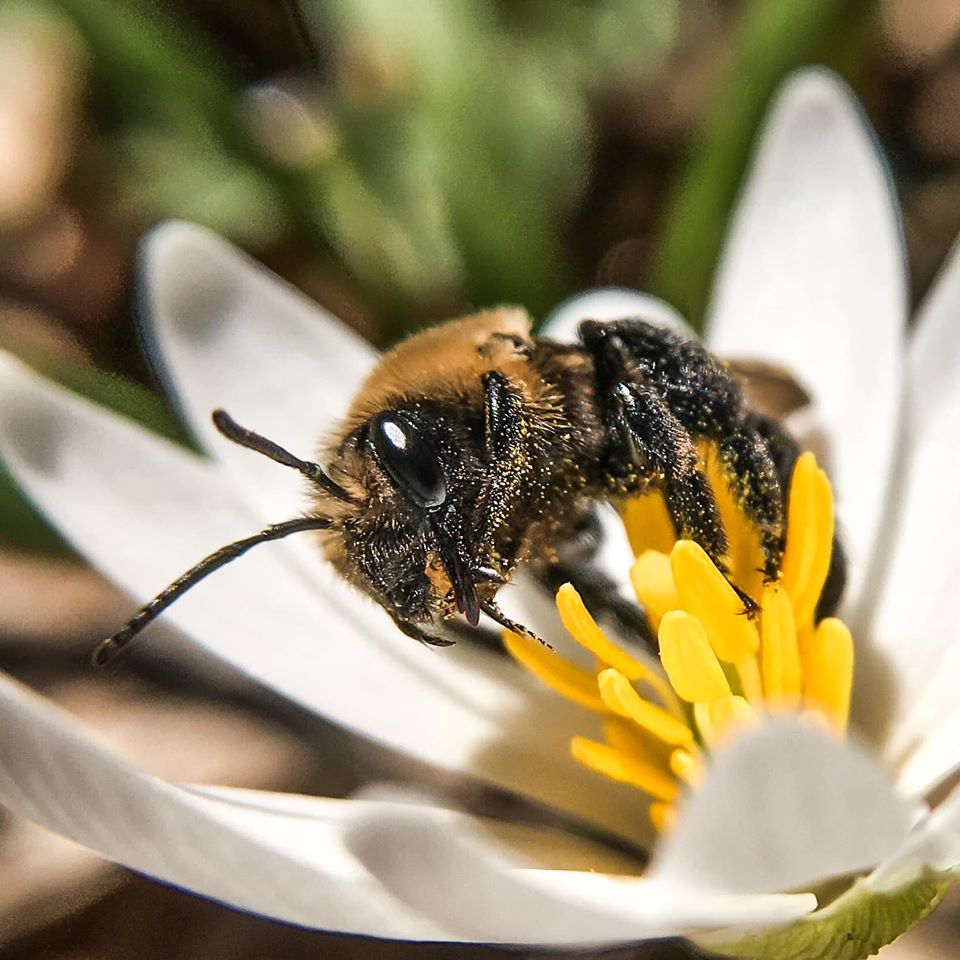
Sanguinaria: Combines the Latin sanguin for “blood” with the suffix aria, which means “pertaining to” or “connected to.”
canadensis: The suffix ensis is Latin for “belonging to,” which indicates this plant likely was first collected in Canada.
san-gwin-ar-ee-uh can-uh-den-sis
Black paste, blood root, bloodwort, bloodworth, boloroot, Canada puccoon, coon root, coonwort, cormroot, Indian paint, Indian plant, Indian red-paint, large-leaved bloodroot, large-leaved sandwort, panson, paucon, pauson, red puccoon, red-Indiana-paint, red Indian plant, red root, redroot, sanddragon, sang-dragon, sang de dragon, snakebite, sweet slumber, tetterwort, tumeric
Life Cycle: Perennial. One of the earliest wildflowers, each plant produces a single inflorescence atop a flowering scape that emerges in early spring wrapped tightly by a basal leaf. As temperatures warm, the bud opens into a showy, but short-lived flower. Following pollination, the petals drop, and as the fruit ripens, the leaves continue to grow and persist into the summer.
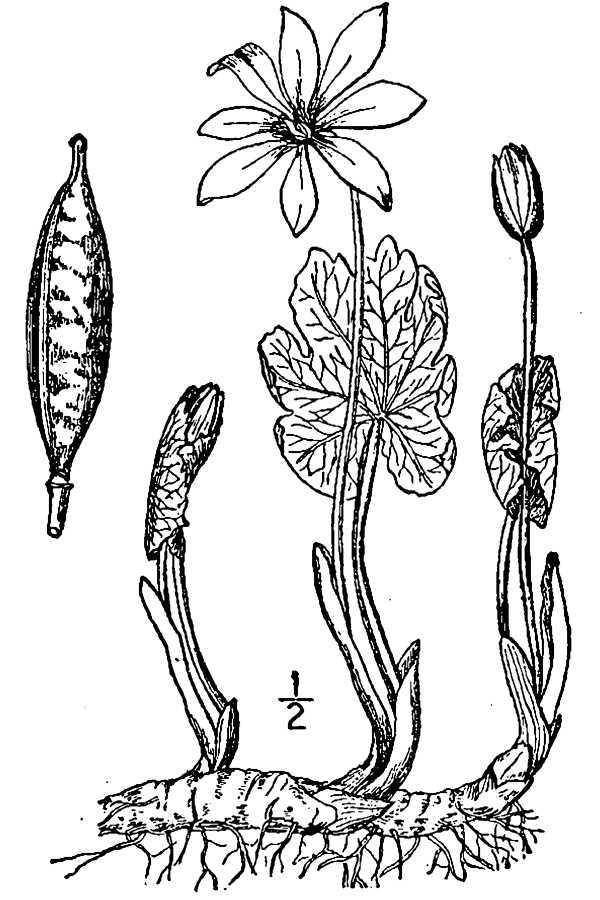
Leaves: Each plant contains a single basal leaf, which emerges at the same time as the flower. Initially tightly-wrapped around the scape, it gradually uncurls becoming petiolate, round, typically 7.5–18 cm (3–7 in) in diameter with 3–9 palmate lobes, green above and whitish-green below.

Flowers: Bloodroot flowers, which average 2.5–5 cm (1–2 in) in diameter, typically contain 8–16 white petals, with numerous yellow stamens, and one ovary. Below the corolla are 2 green to pinkish sepals, which drop as the flower opens. The flowers are insect-pollinated.

Fruit: The nearly round, somewhat flattened fruit is approximately 5 mm (3/16 in) in diameter and contains a single seed.
Key Characteristics: When identifying bloodroot, look for the following characteristics:
Similar Species: The flowers of twinleaf (Jeffersonia diphylla) superficially resemble bloodroot (Sanguinaria canadensis), but the former has fewer stamens (8), and the basal leaf is deeply cleft resembling two leaves.
Although the nursery trade sells several variations of bloodroot, the Integrated Taxonomic Information System (ITIS) currently does not recognize any subordinate taxa of Sanguinaria canadensis.
Bloodroot is native to all of Indiana. However, no herbarium records exist for 13 Indiana counties. In Flora of Indiana, Indiana State Forester Charles C. Deam observed that the medicinal usage of bloodroot has resulted in it becoming less frequent (Deam 1940).


| Toggle Map Layers/Key | ||
|---|---|---|
| GAIN WP records |  |
|
| eFloras’ range map |  |
|
| Combined herbarium records |  |
|
| No records |  |
Rich, mesic to moist woods.

This chart represents the data collected from the GAIN WP project.
This chart represents the data collected from the GAIN WP project.
Functional: Bloodroot’s red root sap was used extensively as a dye by the Cherokee, Chippewa, Delaware, Iroquois, Menominee, Meskwaki, Ojibwa, Omaha, Ponca, Potawatomi, and Winnebago tribes. Typically prepared with other natural materials like wild plum, and mordants, including tannins found in oaks to stabilize and enhance the color, they created various shades of red, orange, and yellow dyes. The tribes used these dyes on their skin for general markings, as war paint for battles, and to stain reeds used for baskets, mats, and clothing (Moerman 1998). European settlers learned the dying techniques from Native Americans, and they also used bloodroot to dye clothing, principally wool. French colonists exported bloodroot to Europe for this purpose (Sanders 2003).
Other uses for bloodroot by Native Americans included using the root sap as a mixture for in insect repellent (Hardstadt 1999) and as a treatment for pregnant horses by the Abnaki tribe (Moerman 1998).
More recently, in 1983, the Colorado-based company Vipont Pharmaceuticals added sanguinarine extracted from the bloodroot’s sap to their Viadent oral hygiene products for its plaque-fighting qualities (Sanders 2003). Sanguinarine does possess both antimicrobial and antifungal qualities, and initially, it appeared to be a promising compound for oral health. However, studies linked the ingredient to an increased occurrence of leukoplakia (white oral lesions). In 2001, Colgate-Palmolive, who had acquired Vipont 12 years prior, removed sanguinarine from their products. The Viadent brand is no longer on the market.
Medicinal: The numerous common names for Sanguinaria canadensis reflect the myriad of medicinal uses that Native Americans developed for the plant. The most widely used part of the plant was the root and root juices, which they prepared into decoctions, powdered concoctions, tinctures, tonics, infusions, and poultices. Various tribes, including the Abnaki, Algonquin, Cherokee, Chippewa, Delaware, Iroquois, Malecite, Menominee, Meskwaki, Micmac, and Ojibwa used bloodroot for the treatment of many ailments and conditions (Moerman 1998).
Among the uses that they developed for bloodroot were treatments for respiratory conditions, including asthma, colds, tuberculosis, coughs, consumption, congestion, and croup. They also used a medicine made from bloodroot to treat sore eyes and earaches, and they mixed bloodroot juice with maple syrup to relieve sore throats.
As a dermatological aide, Native tribes used bloodroot to treat burns, poison ivy, removal of thorns, splinters, cuts and wounds, ulcers, swelling, eczema, and ringworm (Moerman 1998). They also used it for general pain associated with cramps (Moerman 1998), and to treat snakebites (Martin 1993).
The treatment of gastrointestinal ailments included using the root for gas, hemorrhages, cramps, ulcers, constipation, hemorrhoids, diarrhea, and as a general remedy for stomach-related issues. Gynecologically, they used bloodroot as an abortifacient, for irregular menses, and as a prenatal strengthener. Venereal diseases, including gonorrhea and syphilis, were also treated with bloodroot, as were vital organs and their various ailments, including the liver, kidneys, heart, convulsions, and fevers (Moerman 1998).
A panacea for Native American medicine, bloodroot’s popularity led these native tribes to incorporate it into tonics used to purify and strengthen the blood, to fortify other medications, and to treat numerous general illnesses (Moerman 1998).
Landscape: Commercially available and relatively easy to grow, bloodroot performs well in mesic soils of shady woodland gardens. Colony-forming, the showy flowers are short-lived, but they provide early spring color and beauty. As the season progresses, the blooms are replaced by large leaves, which persist into the summer and add interest to the woodland garden.
Bloodroot sap was used in matters of love by Algonquin as a love charm, and the Micmac used it as an aphrodisiac. Ponca bachelors applied the root juice on their palm and then attempted to touch the hand of their love interest, thereby leaving a token of interest in the way of a stain. The Penobscot wore dried root pieces of bloodroot to preventive bleeding. The Iroquois burned the plant and used the smoke to cover the person who had seen a dead person and to treat ugly women (Moerman 1998).
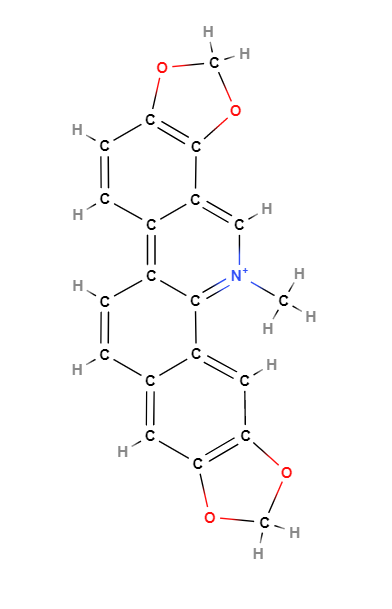
Bloodroot contains eight isoquinoline alkaloids, most notably Sanguinarine (Croaker et al.). Most concentrated in the rhizomes and roots, Sagnuinarine is toxic to animal cells (even fatal in large doses) and may kill skin cells when applied topically.
The names of the following places in Indiana are presumed attributed to bloodroot.
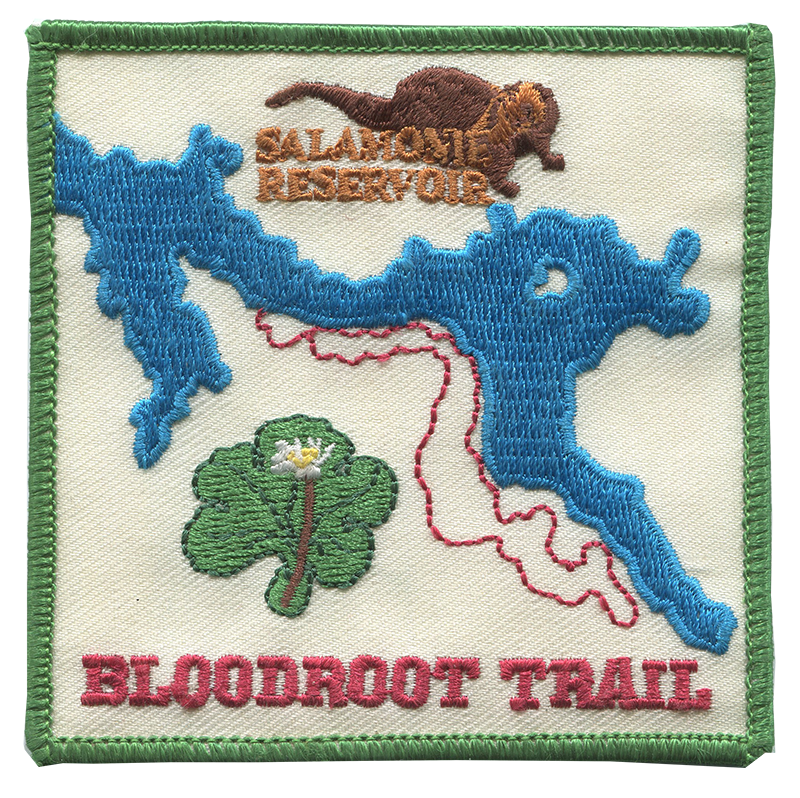
Bloodroot flowers contain no nectar, so pollen is the only reward for visiting insects. Bloodroot is primarily pollinated by bees, and ants spread the seeds.
| Known Faunal Associates in Indiana | ||
| Family | Taxonomic Name | Common Name |
|---|---|---|
| Class: Aves | ||
| Order: Galliformes | ||
| Phasianidae | Bonasa umbellus | ruffed grouse F |
| Phasianidae | Meleagris gallopavo | wild turkey |
| Class: Gastropoda | ||
| Order: Stylommatophora | ||
| Gastropoda | land snails L | |
| Class: Insecta | ||
| Order: Hemiptera | ||
| Aphididae | Linosiphon sanguinarium | aphid (no common name) J |
| Order: Hymenoptera | ||
| Andrenidae | Andrena spp. | mining bees P |
| Apidae | Apis mellifera | European honey bee P |
| Bombus spp. | bumblebees P | |
| Ceratina spp. | small carpenter bees P | |
| Formicidae | ants S | |
| Aphaenogaster spp. | spine-waisted ants S | |
| Halictidae | Halictus spp. | halictid bees P |
| Lasioglossum spp. | sweat bees P | |
| Order: Lepidoptera | ||
| Noctuidae | Spodoptera eridania | southern armyworm moth L |
| Tortricidae | Platynota idaeusalis | tufted apple bud moth L |
| Class: Mammalia | ||
| Order: Rodentia | ||
| Sciuridae | Marmota monax | groundhog or woodchuck L |
| J Juices |
| F Fruit |
| L Leaves |
| P Pollen |
| S Seeds |
Very few, but according to one source, “Alternaria leaf blight, Botrytis (gray mold, leaf blight), and root rot (Pythium)” sometimes infect bloodroot (Davis and Greenfield 2006).
 5: Secure
5: Secure  NR: Not ranked
NR: Not ranked
The images and records below were all submitted by individuals through the Great American Indiana Nature Wildflower Project (GAIN WP).
In addition to the primary bibliography, the authors have referenced the following sources:
Bebeau GD. 2015. Bloodroot, Sanguinaria canadensis. The Friends of the Wild Flower Garden, Inc. [accessed 2020 Apr 22. https://www.friendsofthewildflowergarden.org/pages/plants/bloodroot.html
Croaker A, King GA, Pyne J, Anoopkumar S, Liul L. 2016. Sanguinaria canadensis: traditional medicine, phytochemical composition, biological activities and current uses. International Journal of Molecular Sciences 2016 Sep; 17(9): 1414. [accessed 2020 May 1]. https://www.ncbi.nlm.nih.gov/pmc/articles/PMC5037693/
Davis J, Greenfield J. 2006. Bloodroot (Sanguinaria canadensis L.). Raleigh (NC): North Carolina State University Extension. [accessed 2020 May 1]. https://content.ces.ncsu.edu/bloodroot-sanguinaria-canadensis-l?fbclid=IwAR0KF1wE1mM-WuX004N1OHmq7W6mL4TfCPI8vboAlvt9JEr47ZO6i2LLqUU
Cornell Botanic Gardens. 2020. Bloodroot. Cornellbotanicgardens.org. [accessed 2020 Apr 24]. https://cornellbotanicgardens.org/plant/bloodroot/
Vlachojannis C, Magora F, Chrubasik S. (2012). Rise and fall of oral health products with Canadian bloodroot extract. Phytotherapy research : PTR. 26. 1423-6. 10.1002/ptr.4606. [accessed 2020 Apr 30]. https://www.researchgate.net/publication/221817853_Rise_and_Fall_of_Oral_Health_Products_with_Canadian_Bloodroot_Extract